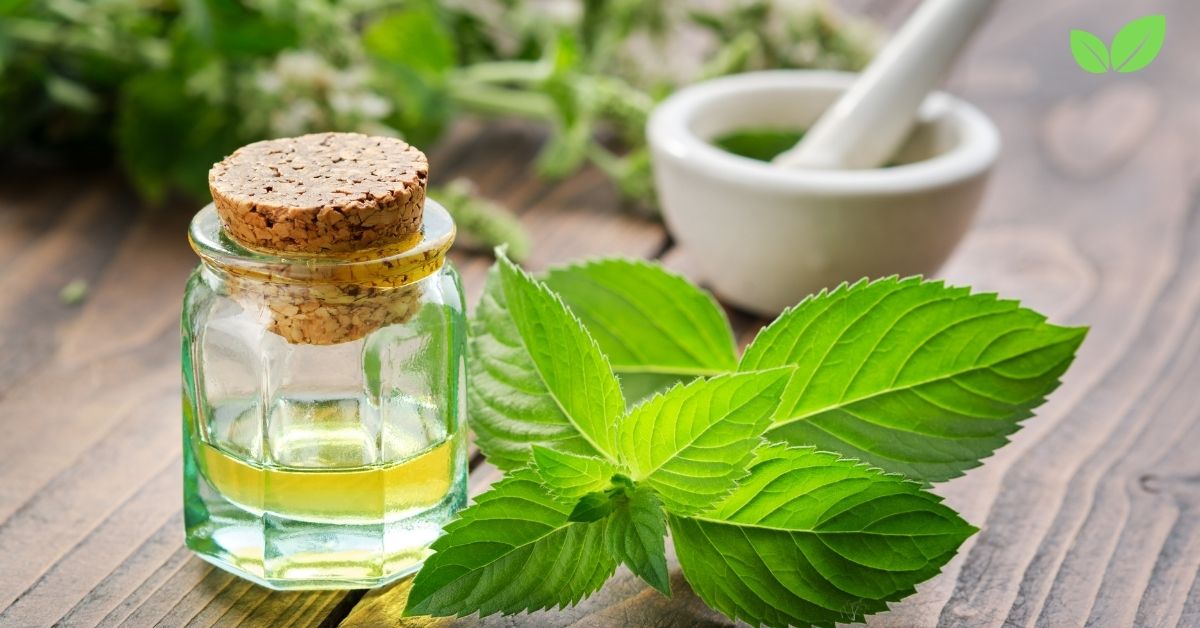Introduction
Spearmint oil is a versatile essential oil derived from the leaves of the spearmint plant (Mentha spicata). Known for its fresh, sweet, and minty aroma, spearmint oil has been used for centuries in herbal medicine, aromatherapy, culinary applications, and even cosmetics. The environmental significance of spearmint oil goes beyond its everyday uses, as it plays a role in agriculture, ecosystem balance, and sustainability. This article will explore spearmint oil from an environmental perspective, delving into its origins, ecological importance, sustainable production methods, and its broader impact on both human health and the environment.
What Is Spearmint Oil?
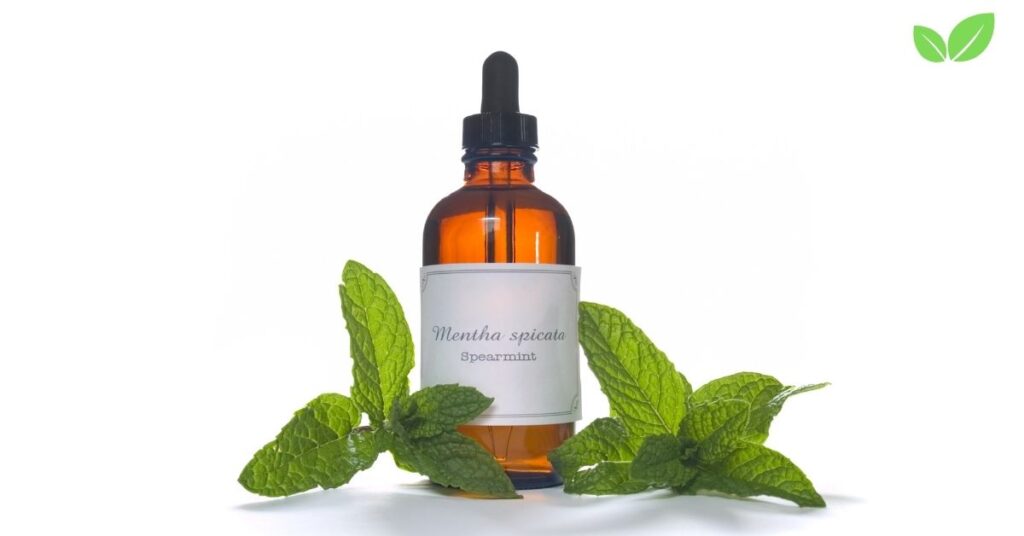
Origins and Production of Spearmint Oil
Spearmint oil is extracted from the spearmint plant, a hardy, perennial herb native to Europe and parts of Asia, though it is now cultivated worldwide. The plant thrives in temperate climates and is a popular crop in regions like the United States, particularly in the Pacific Northwest, where commercial production is widespread. The oil is obtained through steam distillation, a process where the fresh or partially dried leaves are subjected to steam, allowing the volatile essential oils to be released and collected.
Chemical Composition
The primary active component of spearmint oil is carvone, which gives the oil its distinctive minty aroma. Carvone makes up about 50–60% of the oil, and it is this compound that is responsible for many of the oil’s medicinal and therapeutic properties. Other constituents include limonene, cineol, and myrcene. These compounds contribute to spearmint oil’s antioxidant, anti-inflammatory, and antimicrobial properties, making it valuable in both traditional and modern medicinal practices.
Ecological Importance of Spearmint
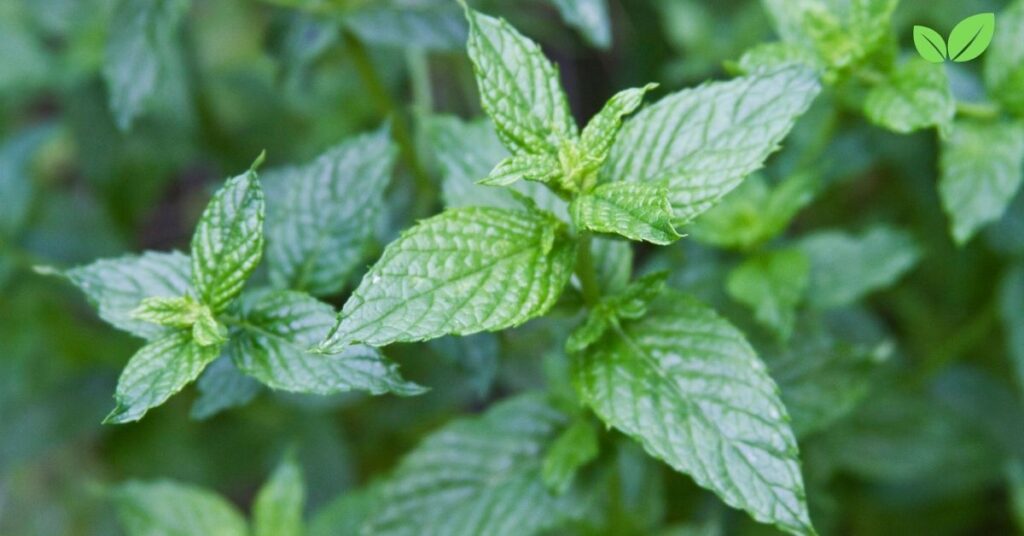
Role in Pollinator Support
Spearmint plants are important contributors to ecosystem health, particularly as a source of nectar for pollinators. The flowers of the spearmint plant attract bees, butterflies, and other pollinating insects, which are crucial for maintaining biodiversity and supporting agricultural productivity. As pollinators face threats from habitat loss, pesticides, and climate change, cultivating spearmint and other nectar-rich plants plays an essential role in promoting healthy pollinator populations.
Soil Health and Erosion Control
Spearmint, like many other mint species, has a robust root system that can help stabilize soil and prevent erosion. When planted in agricultural fields, along riverbanks, or in areas prone to soil erosion, spearmint can act as a natural barrier against soil degradation. Its dense growth pattern also helps retain moisture in the soil, making it a useful crop in sustainable farming systems that aim to improve soil health and reduce water loss.
Sustainable Cultivation of Spearmint
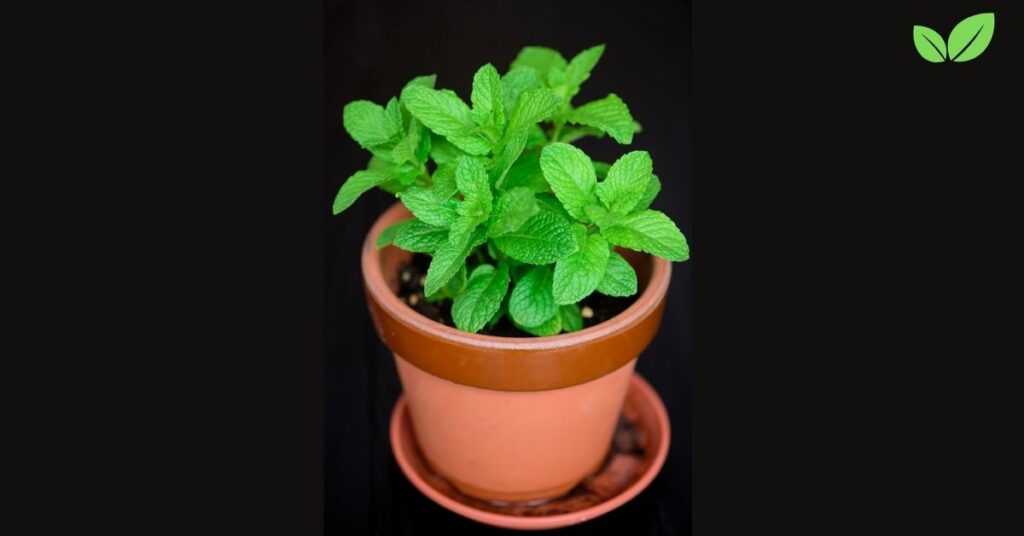
Organic Farming Practices
Spearmint is often grown using organic farming methods, which promote environmental sustainability by avoiding synthetic pesticides, herbicides, and fertilizers. Organic cultivation of spearmint helps maintain soil fertility and biodiversity, reduces water pollution, and minimizes the carbon footprint associated with conventional farming practices.
In addition to environmental benefits, organic spearmint oil is highly sought after in the essential oil market, as consumers become more conscious of the environmental and health impacts of non-organic farming. Organic spearmint farms also support healthier ecosystems by providing habitats for beneficial insects and wildlife.
Water Conservation and Efficient Irrigation
Spearmint, like many other herbaceous plants, requires sufficient water for healthy growth. However, water usage can be a concern in large-scale agriculture, particularly in regions where water resources are scarce. Sustainable spearmint farming practices often incorporate efficient irrigation systems, such as drip irrigation, which reduces water waste by delivering moisture directly to the roots. This method helps conserve water and ensures that spearmint plants receive the necessary hydration without depleting local water supplies.
Crop Rotation and Companion Planting
To maintain soil health and prevent nutrient depletion, many farmers practicing sustainable agriculture employ crop rotation and companion planting techniques when growing spearmint. Rotating spearmint with nitrogen-fixing crops like legumes can help replenish essential nutrients in the soil, while companion planting with other herbs and flowers can enhance biodiversity and protect crops from pests.
For example, spearmint can be planted alongside crops like tomatoes and cabbage to naturally repel insects, as the mint’s strong aroma deters certain pests. This integrated approach reduces the need for chemical pesticides and promotes a healthier, more resilient agricultural system.
Environmental Impact of Spearmint Oil Production

Energy Use in Distillation
One of the primary environmental considerations in spearmint oil production is the energy used during the distillation process. Steam distillation, the most common method for extracting essential oils, requires significant amounts of heat, often generated by burning fossil fuels or using electricity. To reduce the carbon footprint of spearmint oil production, some producers are adopting renewable energy sources, such as solar or biomass energy, to power distillation units.
Additionally, advancements in distillation technology are improving the efficiency of oil extraction, reducing the overall energy consumption and making the production process more sustainable.
Waste Management and By-products
Another environmental concern related to spearmint oil production is the management of plant waste left over after the distillation process. Once the essential oil is extracted, large quantities of biomass remain, which can pose a waste management challenge. However, many innovative farmers and distillers are finding ways to repurpose this plant material.
For example, the spent biomass can be composted and returned to the soil as organic fertilizer, enriching the soil for future crops. In some cases, the plant waste can also be used as a biofuel to generate energy for distillation or other farm operations, further closing the loop in sustainable production practices.
Spearmint Oil and Its Environmental Applications

Natural Pest Control
Spearmint oil is not only valued for its medicinal and aromatic properties but also for its use in natural pest control. Due to its strong scent and high concentration of compounds like carvone and limonene, spearmint oil is an effective natural repellent for insects such as ants, spiders, and mosquitoes. It can be used as a natural alternative to synthetic pesticides, which are harmful to both the environment and human health.
Many farmers and gardeners use diluted spearmint oil to protect crops from insect infestations, reducing the need for chemical pesticides. By using spearmint oil as a natural repellent, agricultural systems can reduce the ecological impact of chemical pesticides, which often contribute to soil degradation, water pollution, and harm to non-target species, including beneficial insects.
Biodegradable Cleaning Products
As awareness grows about the environmental impact of conventional cleaning products, many consumers and manufacturers are turning to biodegradable alternatives made with essential oils like spearmint oil. Spearmint oil’s antimicrobial and antifungal properties make it an effective ingredient in eco-friendly cleaning products, which are free from harmful chemicals and pollutants.
These biodegradable cleaning products help reduce the release of toxic substances into waterways and ecosystems, contributing to cleaner, healthier environments. Additionally, spearmint oil’s natural deodorizing properties make it a popular choice for environmentally conscious households seeking green alternatives to synthetic fragrances.
The Health and Wellness Benefits of Spearmint Oil

Aromatherapy and Mental Health
Spearmint oil has long been used in aromatherapy for its calming and uplifting effects. The refreshing scent of spearmint can help reduce stress, anxiety, and mental fatigue, making it a popular choice for relaxation and mental clarity. Inhalation of spearmint oil is believed to stimulate the mind and enhance concentration, which can be especially beneficial for individuals dealing with mental health challenges or those seeking to improve focus during work or study.
Digestive Health
Traditionally, spearmint oil has been used to alleviate digestive issues such as indigestion, nausea, and bloating. Its antispasmodic properties can help relax the muscles of the gastrointestinal tract, reducing discomfort and promoting healthy digestion. Ingesting spearmint tea or using spearmint oil in diluted form can offer relief from common digestive ailments, making it a popular remedy in natural medicine.
Anti-inflammatory and Antioxidant Properties
Spearmint oil contains compounds that have been shown to exhibit anti-inflammatory and antioxidant effects. These properties make the oil useful in reducing inflammation and oxidative stress in the body, which are associated with various chronic conditions, including arthritis, cardiovascular disease, and even skin aging.
When applied topically (after dilution with a carrier oil), spearmint oil can help reduce inflammation in sore muscles and joints, offering relief from pain and stiffness. Its antioxidant properties also make it a popular ingredient in skincare products, where it helps protect the skin from damage caused by free radicals and environmental stressors.
The Future of Spearmint Oil in a Sustainable World
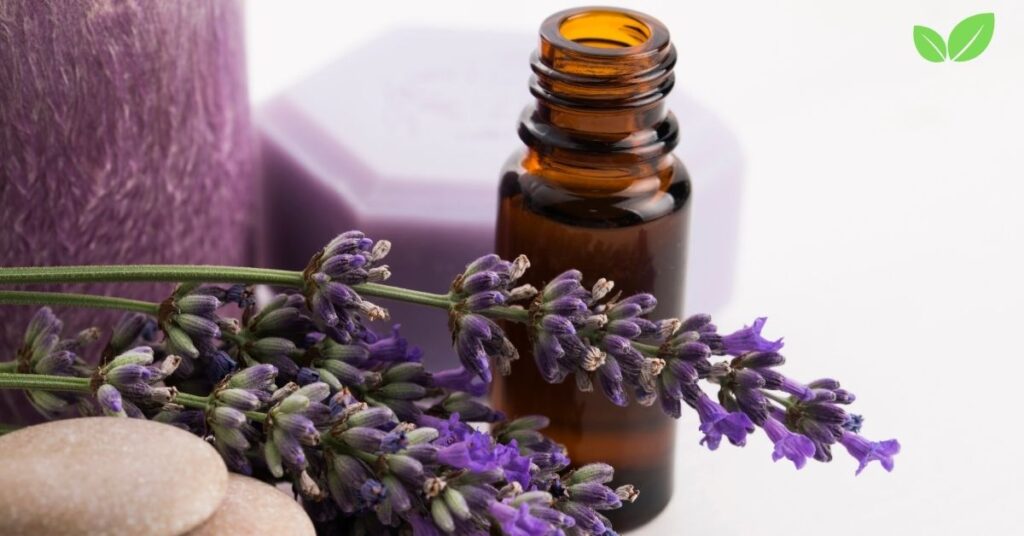
Research and Innovation
As the demand for sustainable products grows, spearmint oil is likely to continue playing a significant role in various industries, from natural health products to eco-friendly farming and cleaning solutions. Ongoing research is exploring new ways to use spearmint oil and other essential oils in sustainable applications, such as biodegradable packaging, natural preservatives, and even renewable energy sources.
Innovations in sustainable agriculture and energy-efficient distillation techniques will also be crucial in reducing the environmental impact of spearmint oil production. By integrating renewable energy, organic farming, and circular waste management practices, the production of spearmint oil can become more aligned with global sustainability goals.
Conclusion
Spearmint oil is not only a valuable resource for its health, wellness, and culinary applications but also plays a key role in supporting environmental sustainability. From its role in promoting pollinator health and preventing soil erosion to its use in natural pest control and biodegradable products, spearmint oil has a broad range of benefits that extend beyond personal care.
As the world moves toward more sustainable practices, the cultivation and production of spearmint oil offer promising opportunities to support both environmental health and human well-being.
Read More: Oil on Walnut: Sustainable Finishing and Environmental Considerations

